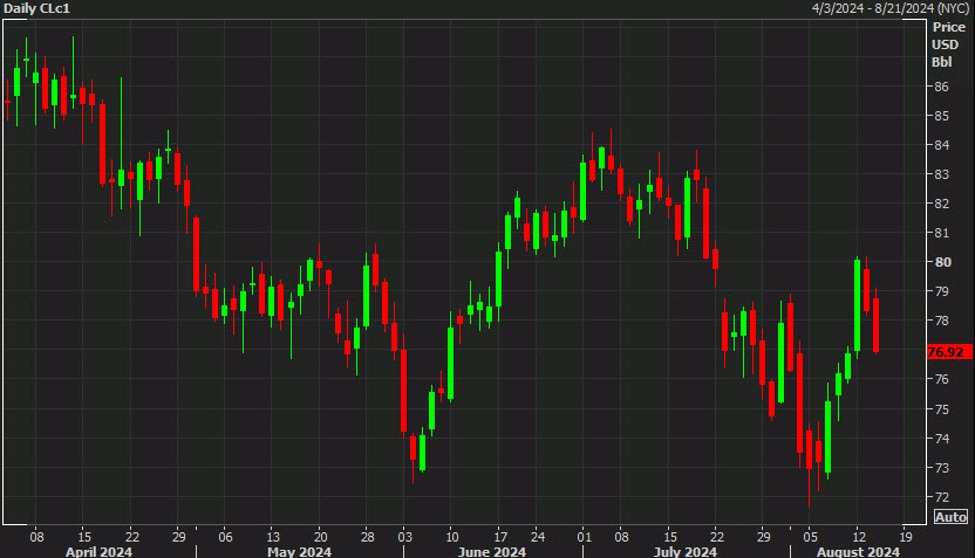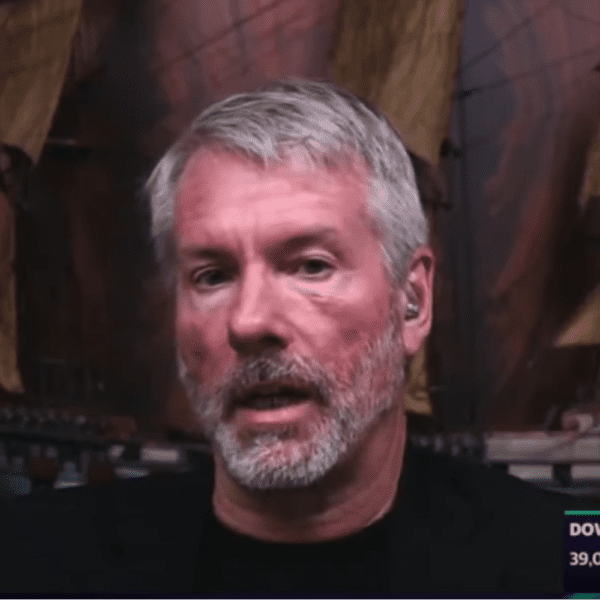Smederevac/iStock via Getty Images
Nkarta, Inc. (NASDAQ:NKTX) is gearing up to release additional data from a phase 1 study using its natural killer [NK] cell therapy NKX019 to treat patients with relapsed/refractory non-Hodgkin’s lymphoma [NHL]. Such updated data, from a new set of 7 patients from another cohort targeting large B-cell lymphoma [LBCL] patients, is expected in late 2024. This is the near-term catalyst to consider, which, if positive, might cause the stock price to trade higher. The thing about this company is that its allogeneic NK cell therapy technology cannot only be applied to the targeting of cancers, but also autoimmune disorders. As such, it has deployed two studies known as Ntrust-1 and Ntrust-2, which are using NKX019 to target Lupus Nephritis [LN] and systemic sclerosis, myositis, and vasculitis respectively.
The Ntrust-1 study for LN is already underway, and then the Ntrust-2 study for these other autoimmune disorders is expected to begin by the end of 2024. Why should investors be concerned with these programs? Despite only one being initiated, plus the other to be initiated shortly, data from both of these studies are expected in 2025. These several milestone inflection points will be crucial to prove one way or another if this company’s NK cell therapy can treat both cancers and autoimmune disorders. Although, as I will explain below, it is likely that it might do better using NKX019 for the treatment of autoimmune disorders because of fewer barriers. All of this remains to be seen, but what has been shown thus far is quite promising. What needs to be observed next is whether such responses continue in the clinic when humans receive NKX019.
NKX019 For The Treatment Of Patients With Non-Hodgkin’s Lymphoma Continues To Progress
The first clinical program to go over from Nkarta’s pipeline would be the use of NKX019, which is an allogeneic off-the-shelf Natural Killer [NK] cell therapy targeting patients with relapsed/refractory non-Hodgkin’s Lymphoma. The use of this therapy is being evaluated in a phase 1 study targeting this patient population. Before going over this entire clinical program, I believe it is first important to highlight what this disorder is and what the possible market opportunity could be. Plus, what I will also note below is the main first target of choice of subpopulation for NHL. Non-Hodgkin’s Lymphoma [NHL] is a type of cancer whereby the lymphatic system becomes malignant. The lymphatic system is highly significant for fighting off infections and other bacterial substances, thus with this problem, affected patients require treatment options. Another item to note is that the lymphatic system isn’t just found in one key area of a person’s body. It is found throughout many parts of the body, such as the following:
- Spleen
- Lymph nodes
- Digestive tract
- Tonsils
- Thymus.
The global non-Hodgkin’s Lymphoma Therapeutics market is expected to grow to $17.5 billion by 2032. This is a considerable market opportunity, but it is key to note that the types of patients to be targeted are those with relapsed/refractory disease. For instance, even though most diffuse Large B-cell Lymphoma [DLBCL] patients achieve success with chemotherapy, about between 30% to 40% relapse. From there, the next treatment of choice besides chemotherapy or autologous stem cell transplant [ASCT] would be approved autologous CAR-T Therapies, such as Yescarta [axi-cel] from Gilead Sciences (GILD) or Breyanzi [liso-cel] from Bristol-Myers Squibb (BMY). Breyanzi has been approved to treat patients with r/r large B-cell lymphoma [LBCL], including diffuse large B-cell lymphoma [DLBCL].
There is a profound understanding that autologous CAR-T Therapies have set the bar for helping the patients who don’t respond to initial treatment, such as first-line immunochemotherapy or ASCT. If this is the case, then where does Nkarta’s therapy fit in? Well, this goes to some major issues with CAR-T. The first of which is lack of ability to dose patients. Only a certain percentage of patients, between 20% to 30%, can benefit from it. This means treatment is not broadly accessible.
Not only that, but such patients change providers a lot and thus, in transition, must use bridging chemotherapy until they receive the next treatment option. The second notion goes to a toxicity profile that remains when patients receive autologous CAR-Ts. Over 25% of patients require being near an inpatient center due to toxicity of this treatment.
Another problem is Grade 3+ Cytokine Release Syndrome [CRS] that occurs, which is between 13% to 49% for instance. The final item that still needs to be addressed is in terms of response. Consider that only 30% to 40% of patients have a response that lasts as long as 6 months. From there, it gets worse because patients may not be able to be re-dosed lacking response. Nkarta with NKX019 hopes to change all of this, with providing the following:
- No broad accessibility for Autologous CAR-Ts — NKX019 could open the ability to allow more patients to benefit from its treatment, instead of a lower percentage
- Toxicity issues for Autologous CAR-Ts — NKX019 could lower the amount of CRS events and/or ICANS/neurotoxicity profile [This is done because of the lack of needing both lymphodepletion agents before receiving treatment, plus NK cell therapy being safer/tolerable]
- Lack thereof or no redosing option for patients who don’t respond to Autologous CAR-T — The way that NKX019 acts as a NK cell therapy, it can easily be re-dosed again for patients who don’t respond on first cycle of therapy
Other improvements that could be provided by NKX019 are: Cost of manufacturing being lower, lower risk for graft-versus-host disease [GvHD] and improved solid tumor activity [Ability to better combat against the tumor microenvironment].
To see if Nkarta can successfully target relapsed/refractory non-Hodgkin’s Lymphoma [NHL] patients with NKX019, it deployed a phase 1 single-arm open-label study. This particular early-stage trial has already treated a few patients with r/r NHL. This included a total of 4 patients who didn’t respond the first time with this NK therapy, but then, on re-treatment, were able to achieve a complete response [CR]. What this shows here, is that this therapy provides the avenue for the re-dosing I noted above.
What I do want to note is that the future of this program hangs in the balance of the next update. Why is that? That’s because the company had taken a bold move to open a new cohort, entailing a compressed 7-day dosing schedule. This is where patients with large B-cell Lymphoma [LBCL], who had progressed on prior CAR-T therapy, will be dosed with NKX019 on Days 0, 3, and 7 following lymphodepletion of cells with fludarabine [flu] and cyclophosphamide [cy]. Data from this cohort with LBCL patients is expected by the end of 2024. If good data is obtained from this cohort with 7 patients, then this program will likely continue to the next stage of development. Otherwise, it is likely that Nkarta will discontinue it, and just focus its efforts on advancing NKX019 only towards the targeting of autoimmune disorders.
Financials
According to the 10-Q SEC Filing, Nkarta had cash, cash equivalents, restricted cash and investments of $426.7 million as of June 30th of 2024. The reason for the cash on hand is that back on March 25th of 2024, it announced the pricing of an underwritten public offering. That is when it sold 21,010,000 shares of its common stock at $10 per share and prefunded warrants to purchase 3,000,031 shares of common stock. Total net gross proceeds from this offering were $240.1 million.
The beauty of this biotech is that it now is in good shape in terms of cash on hand. So good that it could cross all 3 major expected data readouts with ease. It believes that it has a cash runway, or enough cash on hand to fund its operations, into late 2027. Its cash burn per quarter is $30.7 million.
Risks To Business
There are several risks that investors should be aware of before investing in Nkarta. The first risk to consider would be regarding the expected release of results from the ongoing phase 1 single-arm, open label study using NKX019 to treat the patients in the cohort targeting 7 patients with LBCL. There is no assurance that data to be released from this study will turn out to be positive. Nor, that the data to be shown to the public allows the company to continue to the next stage of clinical testing.
The second risk to consider would be in terms of using NKX019 for the treatment of patients with lupus. This program is off to a great start whereby this NK cell therapy is being used to target these patients in two different studies. The first study, known as Ntrust-1, is using this therapy to only treat patients with Lupus Nephritis [LN]. The importance of this program is that it will give an early look at using NK cell therapy NKX019 for the treatment of these patients. Having said that, there is a major catalyst opportunity for investors to look forward to next year. It is expected that preliminary data from this early-stage study, using this therapy to treat these LN patients, is expected in 2025. There is no assurance that the trial results will be positive or warrant further advancement for this program.
Another shot on goal has been garnered for the targeting of this autoimmune disorders. Specifically, it was able to have an investigator-initiated phase 1 trial initiated by Columbia University Irving Medical Center [CUIMC]. The lead principal investigator of this trial is Dr. Anca Askanase. This study is going to target Systemic lupus erythematous [SLE] patients with or without renal involvement [with or without LN]. Even if the other study only targeting LN turns out to be successful, there is no guarantee that this other study, targeting both sets of patient populations, will be positive.
The third and final risk would be regarding the development of NKX019 towards the targeting of other autoimmune disorders. This would be with the use of this cell therapy in the phase 1 Ntrust-2 trial targeting patients with systemic sclerosis, myositis, and vasculitis. This study is deploying three doses of NKX019 on Days 0, 3, and 7 following LD with single-agent cy. Even if it indicated that this NK therapy works in treating patients with SLE or LN, there is no guarantee that it will also end up doing well against all of these other autoimmune disorders. Nor that the data to be released will warrant further investigation into subsequent studies.
Conclusion
Nkarta has done well to set itself up for several milestones for investors to look forward to. In terms of the program using NKX019 to treat patients with relapsed/refractory LBCL, whether this continues depends upon the data to be released from the 7 patients in the new cohort by the end of this year. Hopefully, there is a good shot at targeting LBCL and other NHLs because it would end up being a huge market opportunity for it to go after. That’s because the global non-Hodgkin’s Lymphoma Therapeutics market is expected to grow to $17.5 billion by 2032.
It is quite possible that the re-dosing established in the new cohort protocol might be enough to get this NHL treatment program moving forward. However, I think there is better promise regarding using a NK cell therapy such as NKX019 to target B-cell autoimmune disorders. For starters, B-cell cancers have antigen escape and thus the targeting of CD-19 is not as effective. Secondly, they have the tumor microenvironment, which has good trafficking and infiltration control. Whereas autoimmune disorders don’t have this barrier. Lastly, malignant cells have a large cell burden. Many free roaming cells leads to less effectiveness of cell therapies. On the flip side, autoimmune disorders have fewer target cells to go after. Thus, the efficacy to treatment ratio should be improved considerably.
Editor’s Note: This article discusses one or more securities that do not trade on a major U.S. exchange. Please be aware of the risks associated with these stocks.














